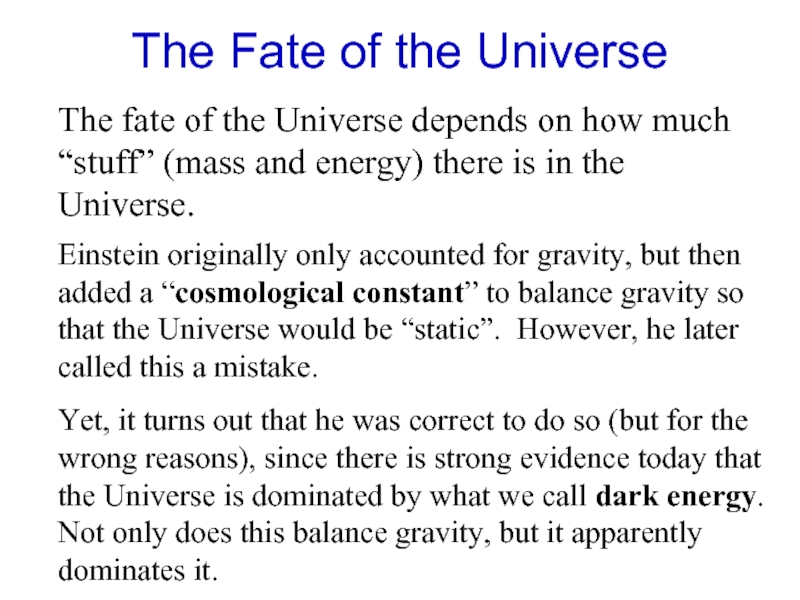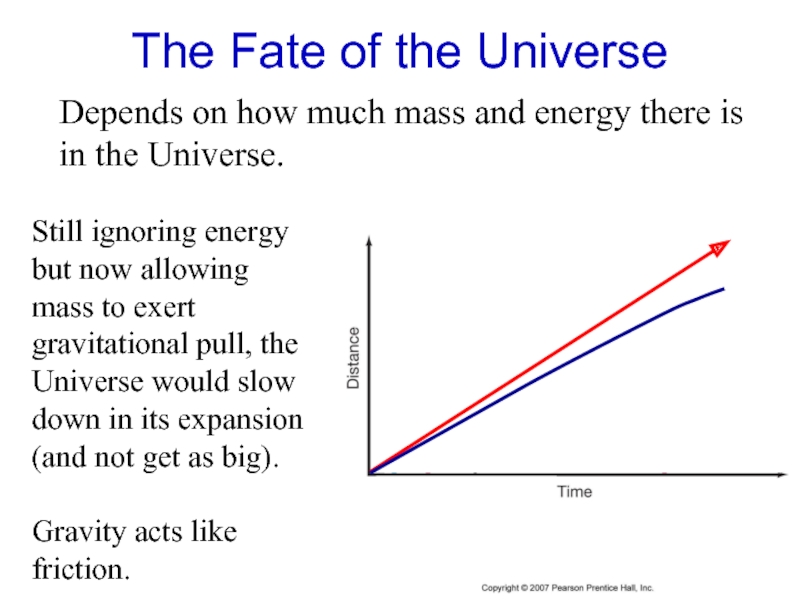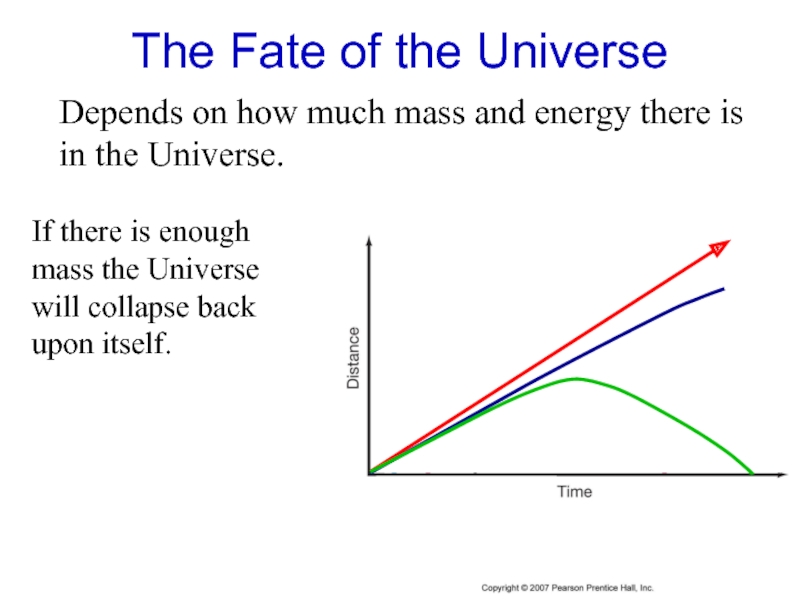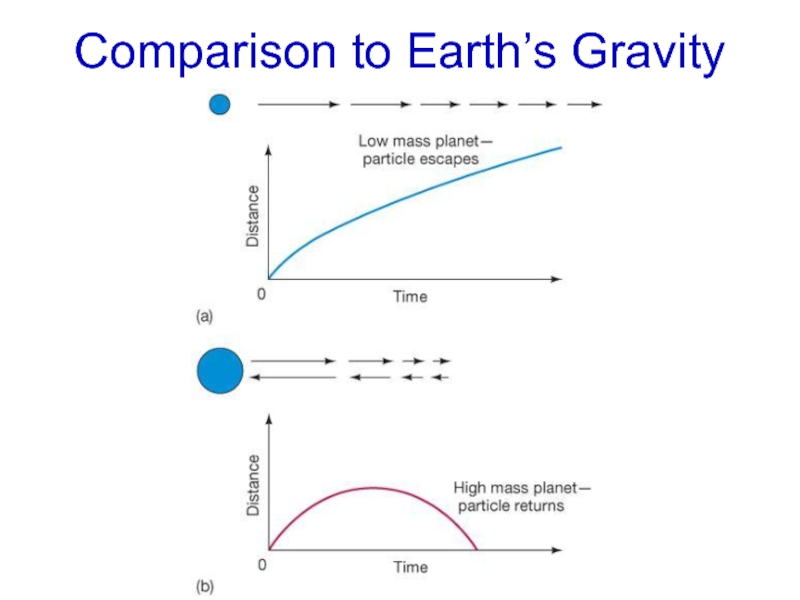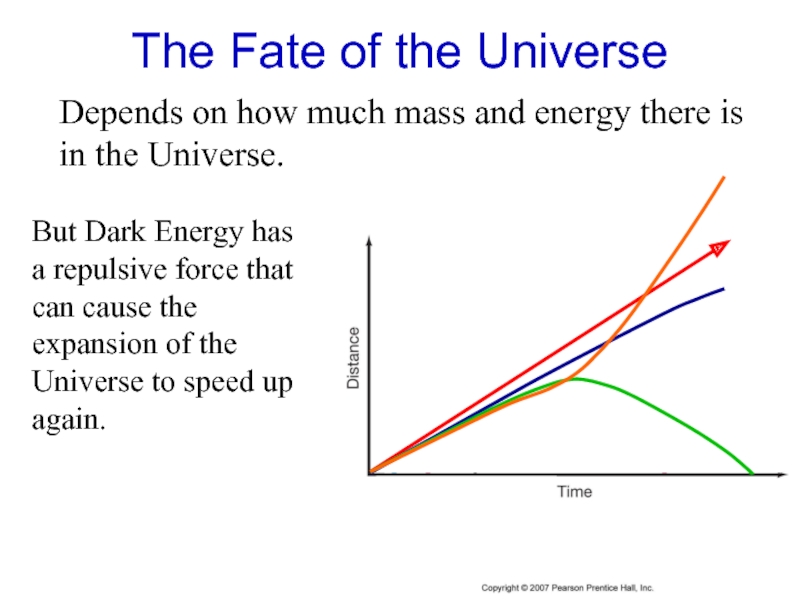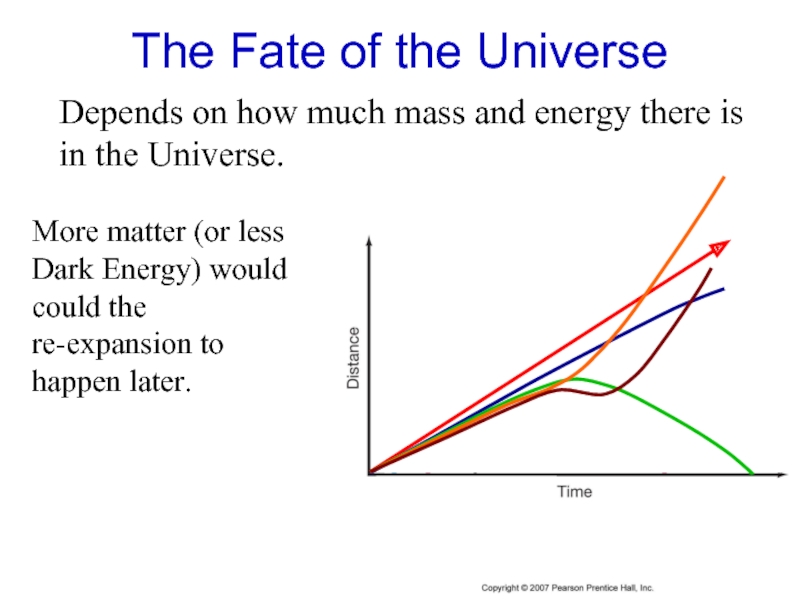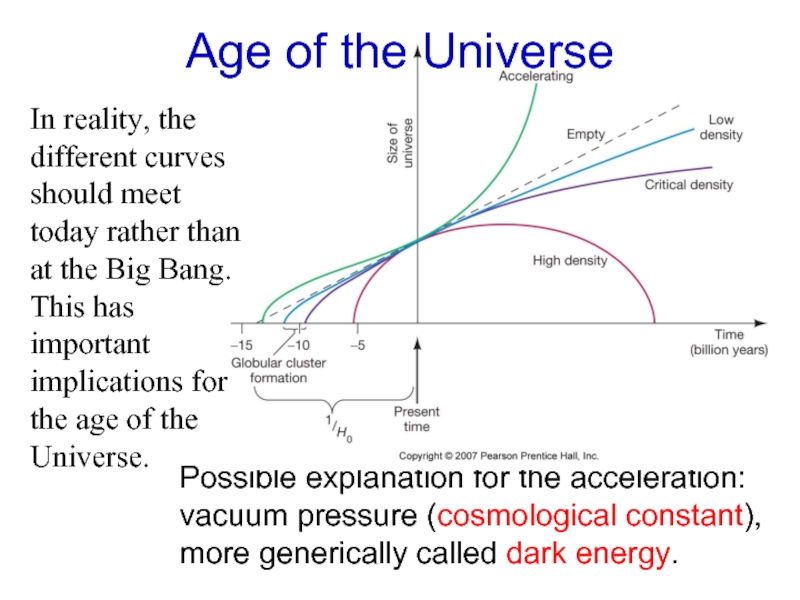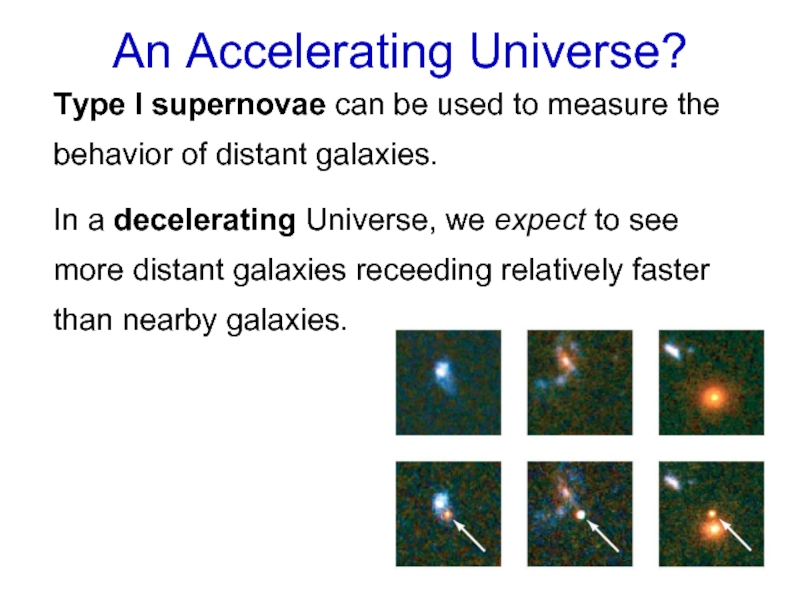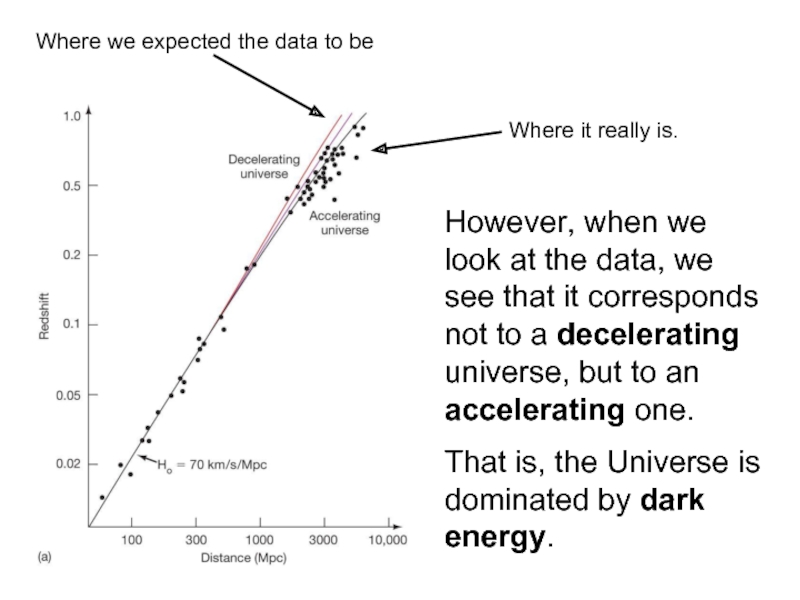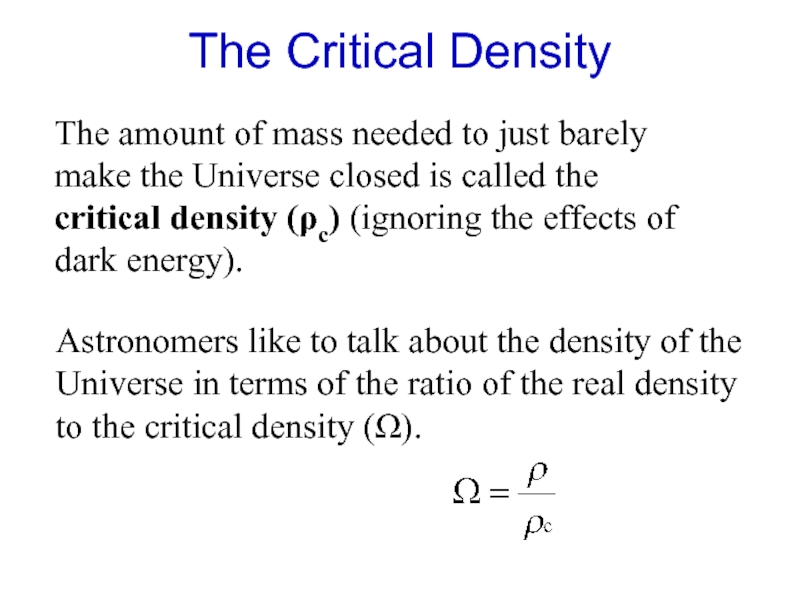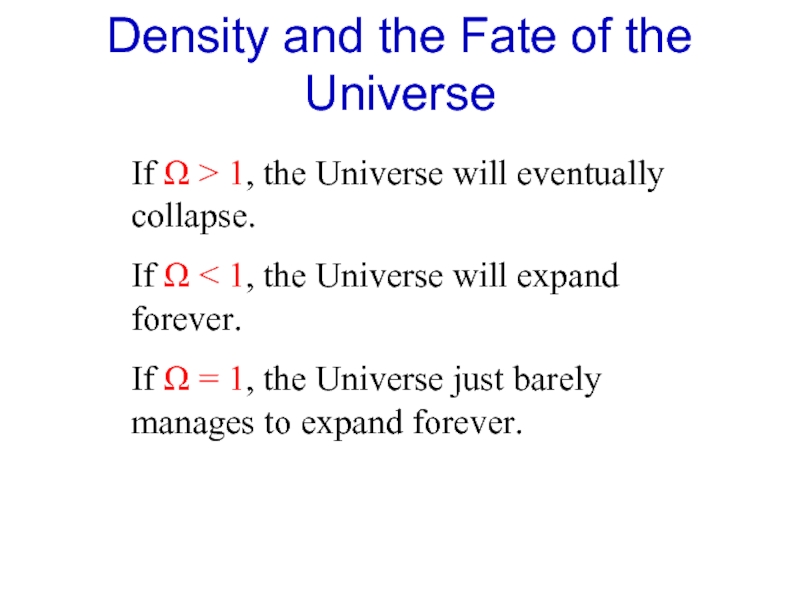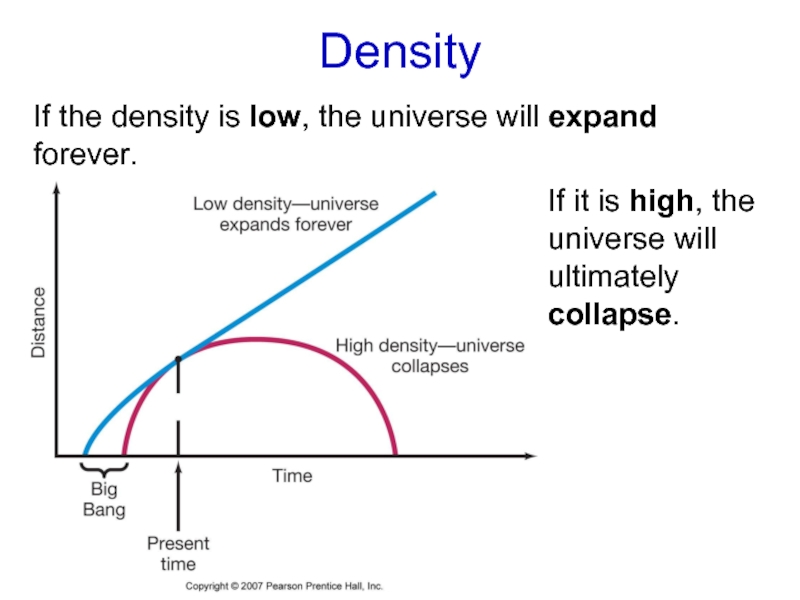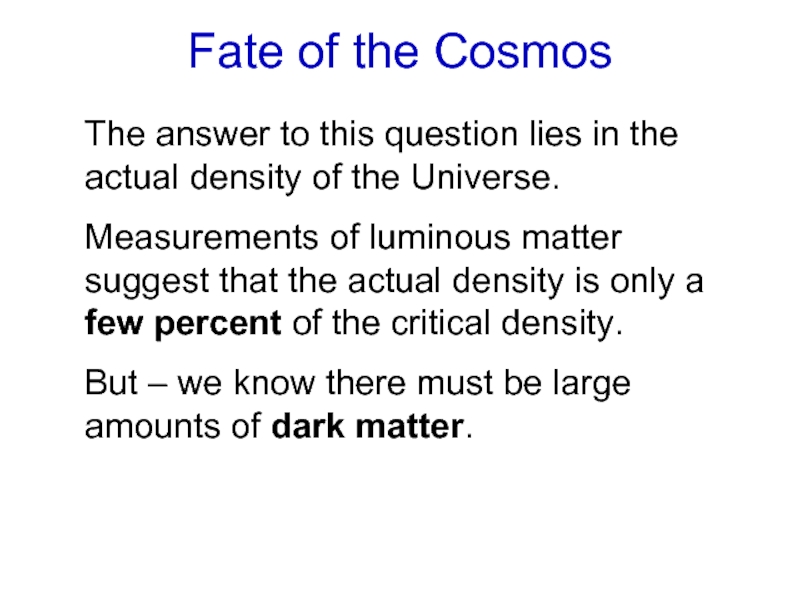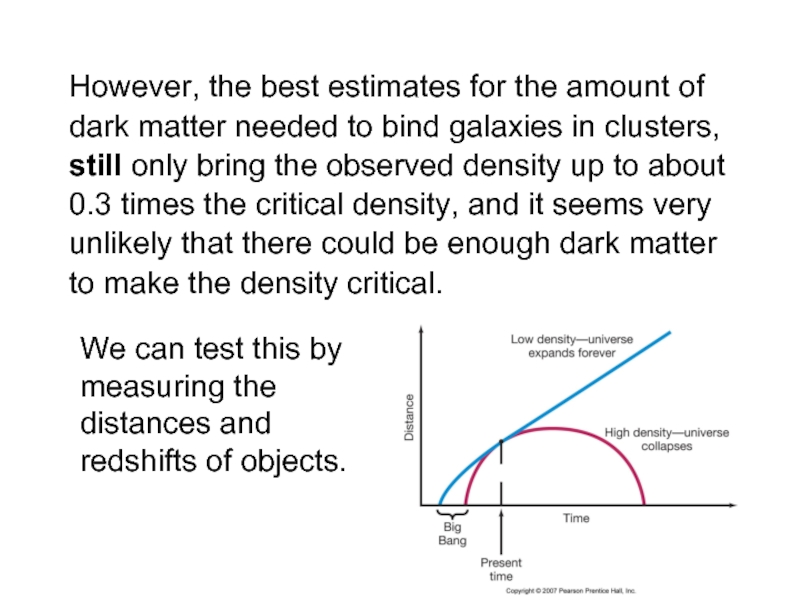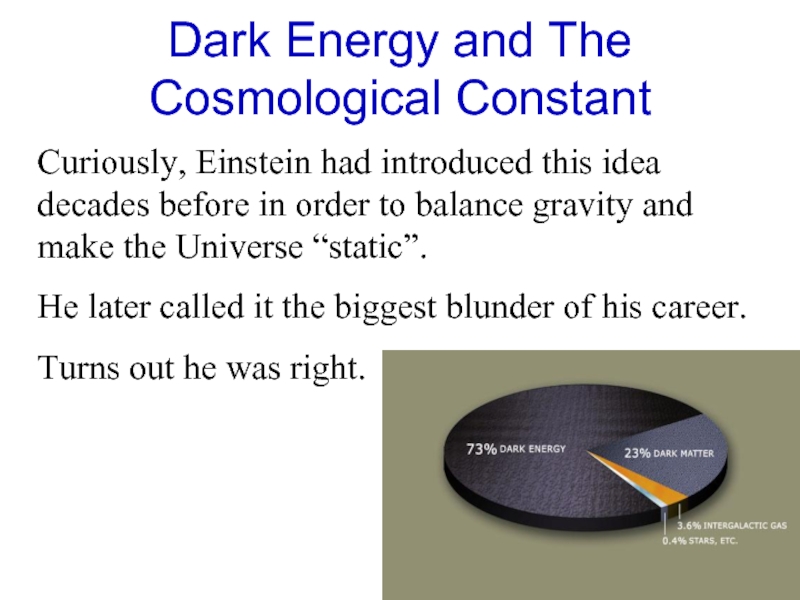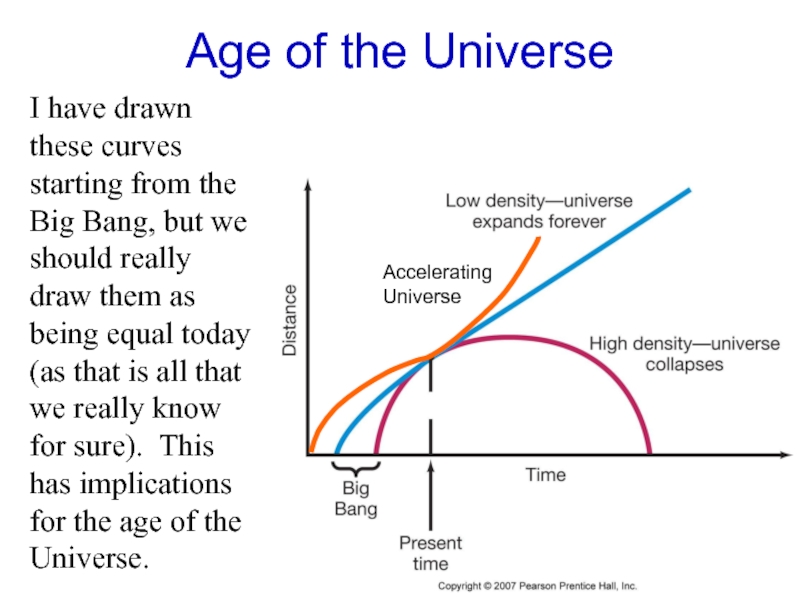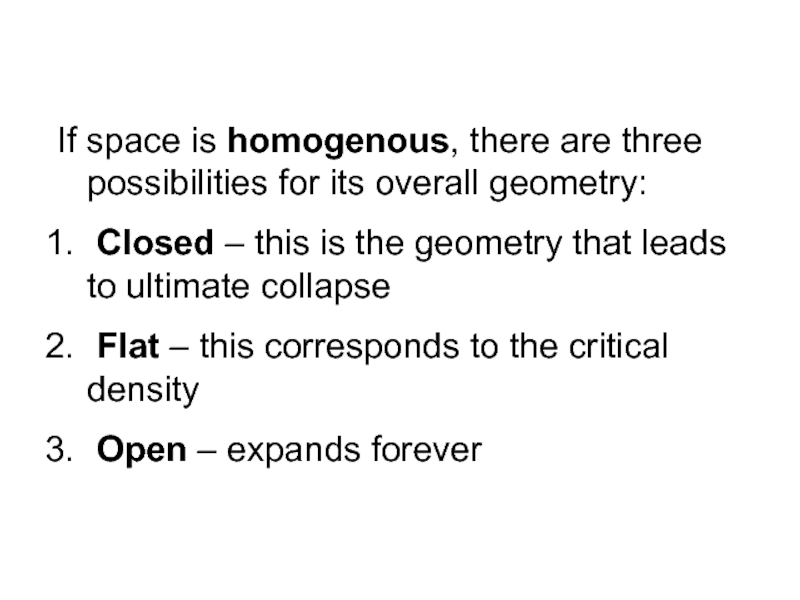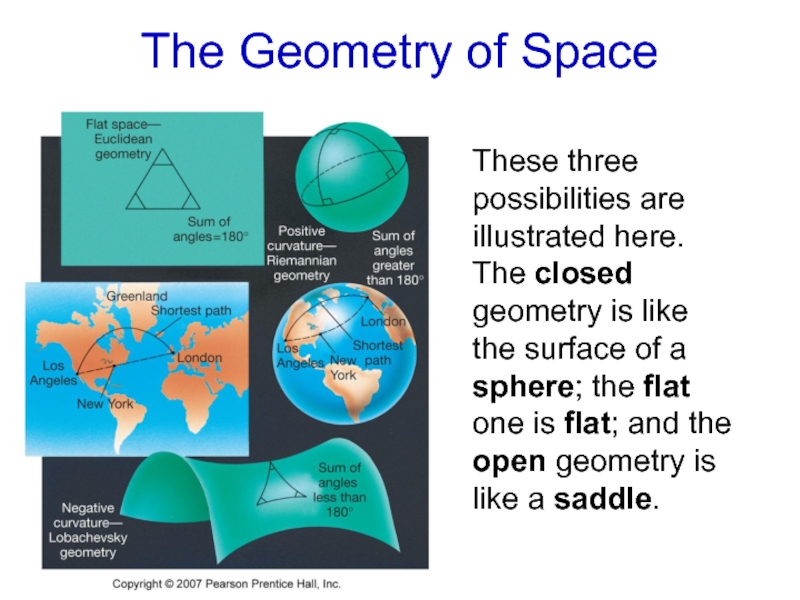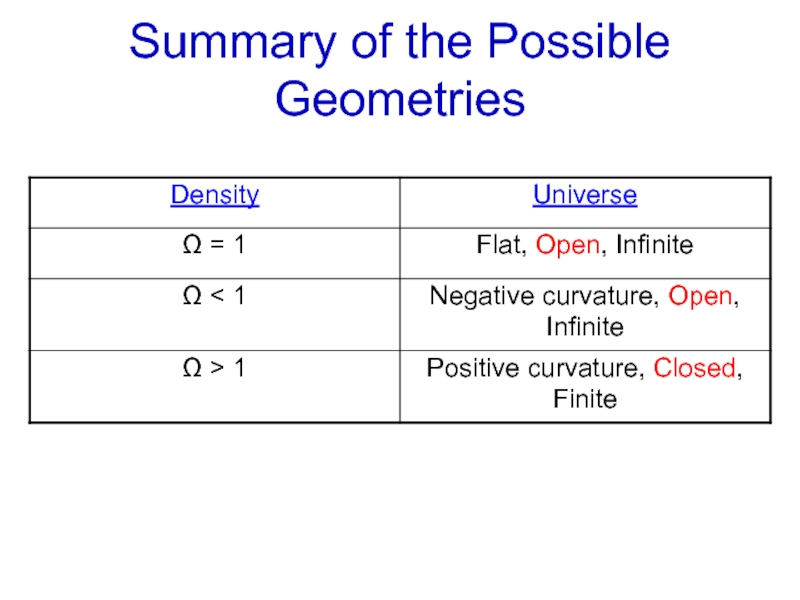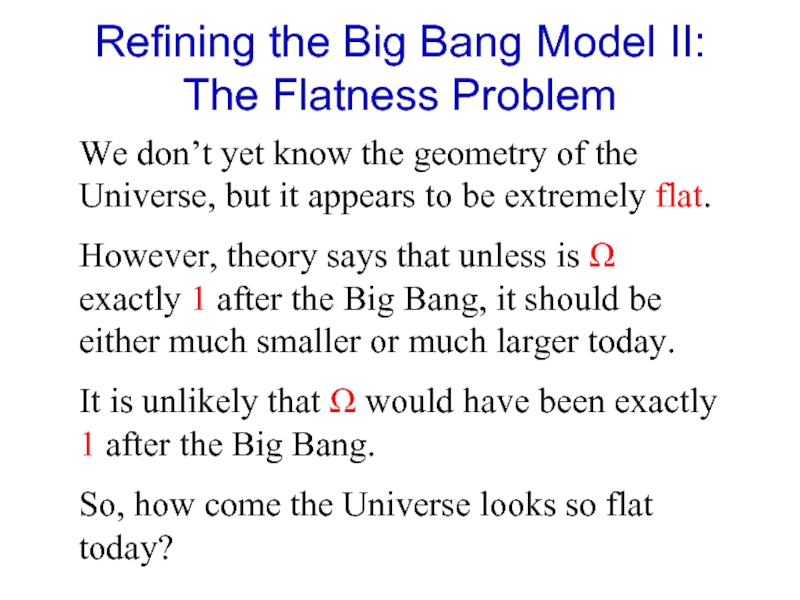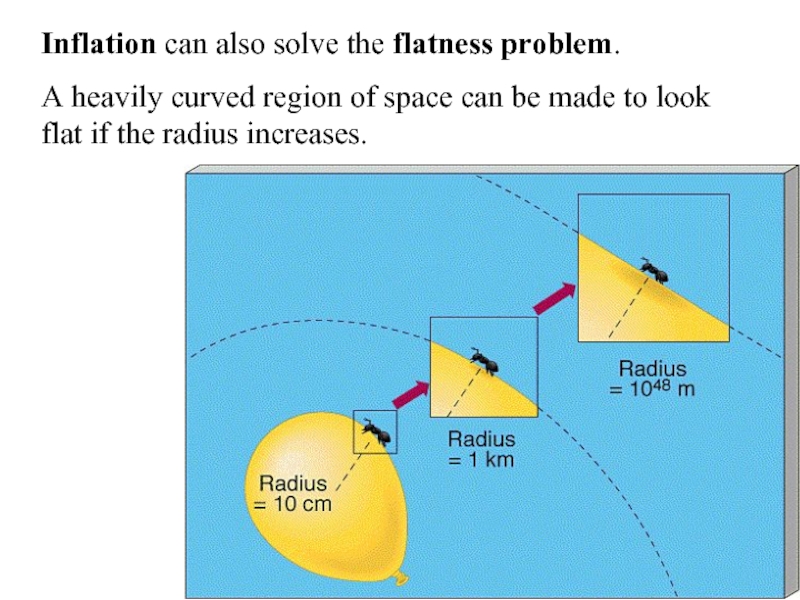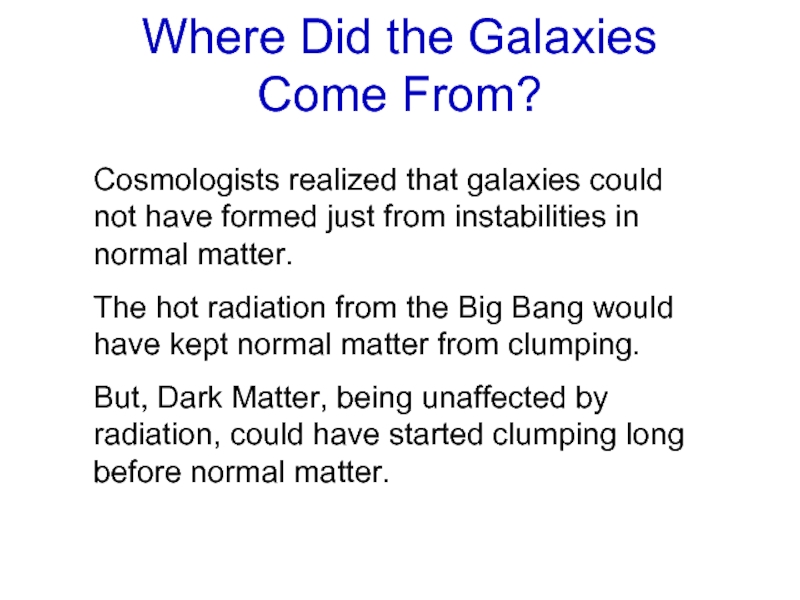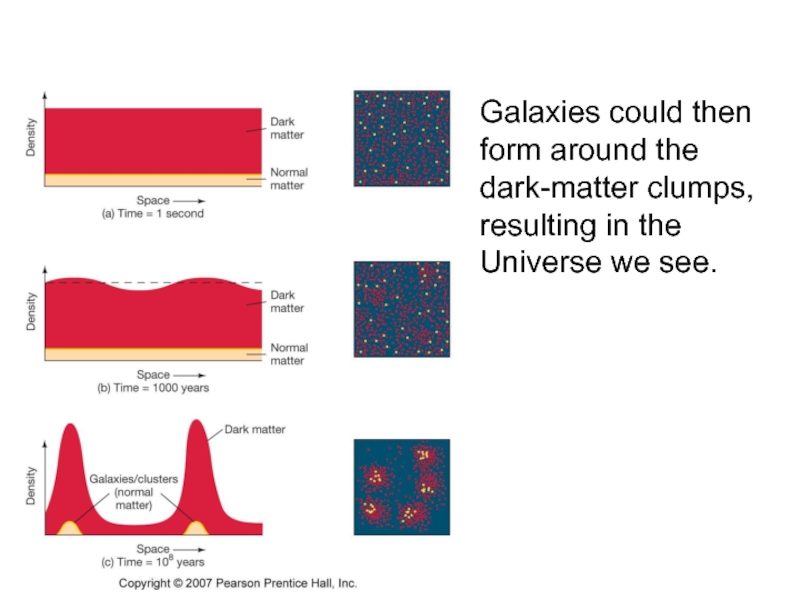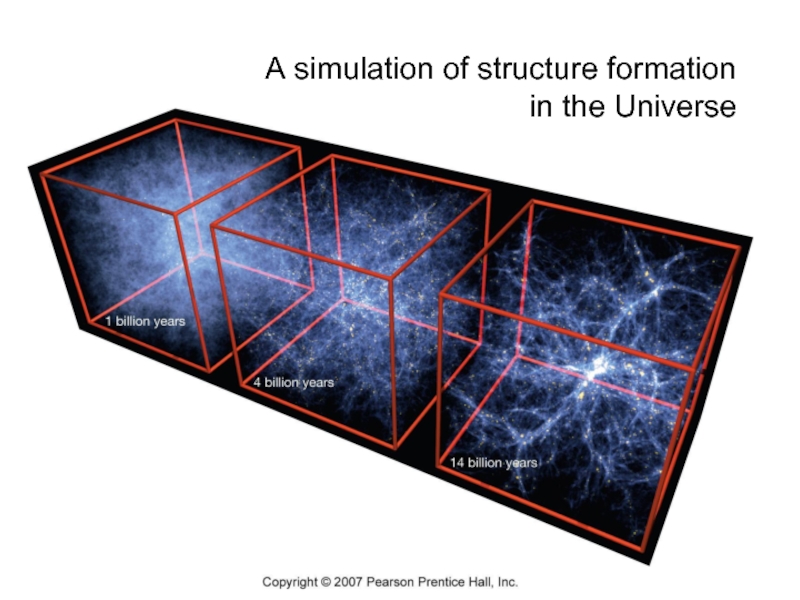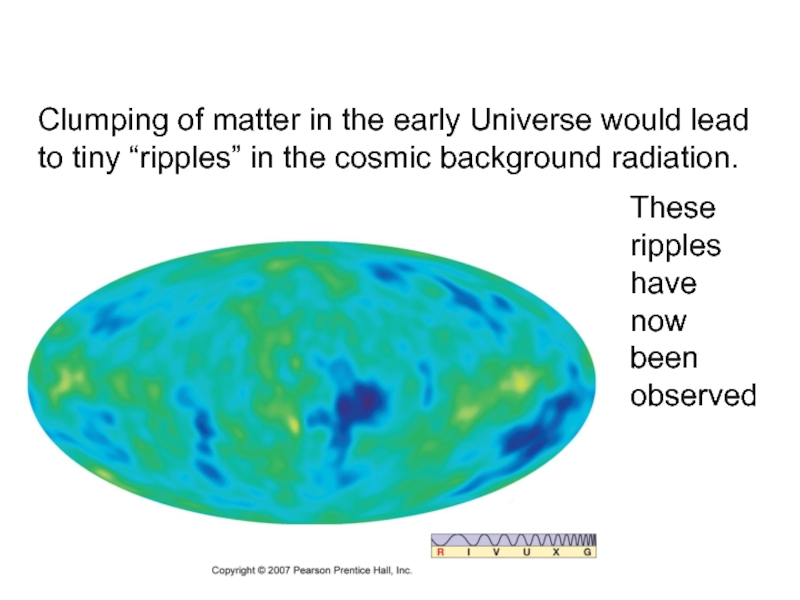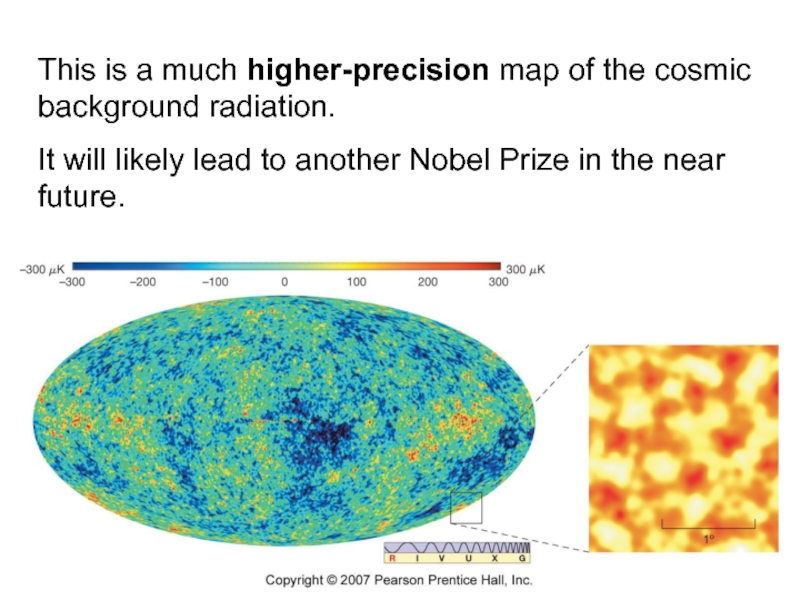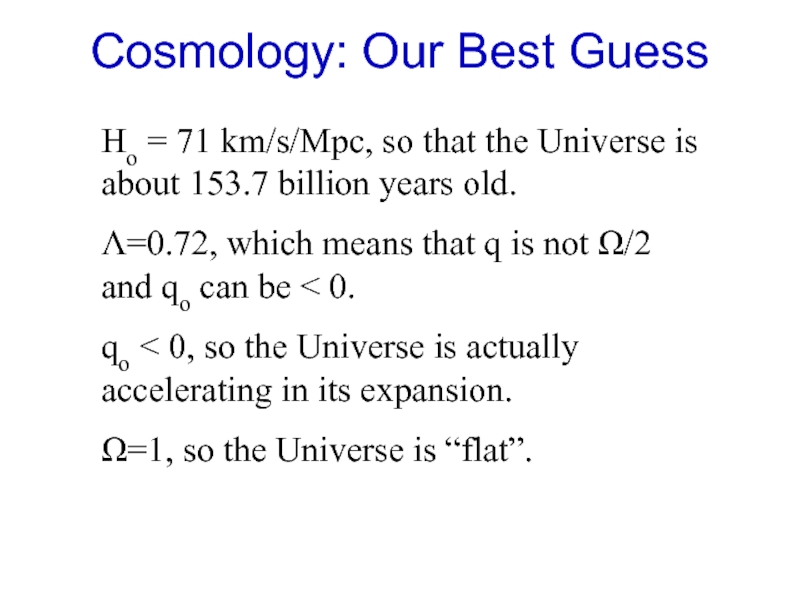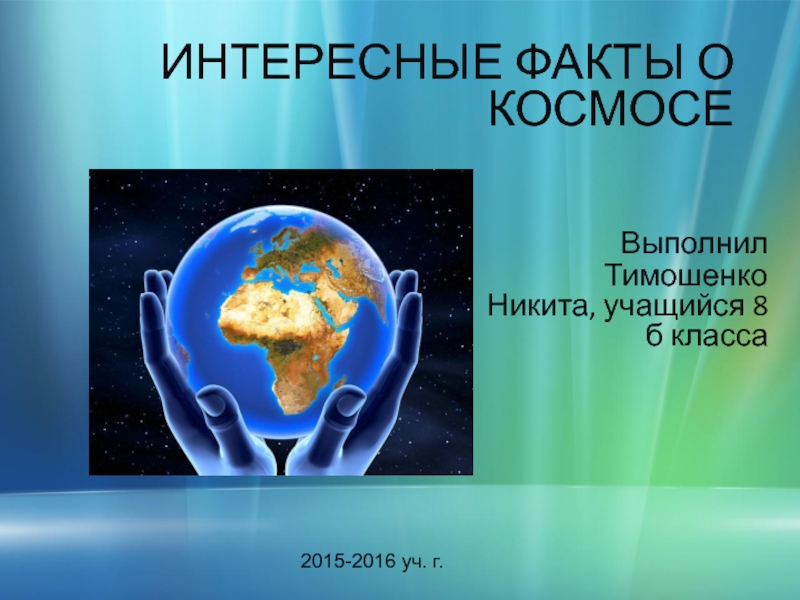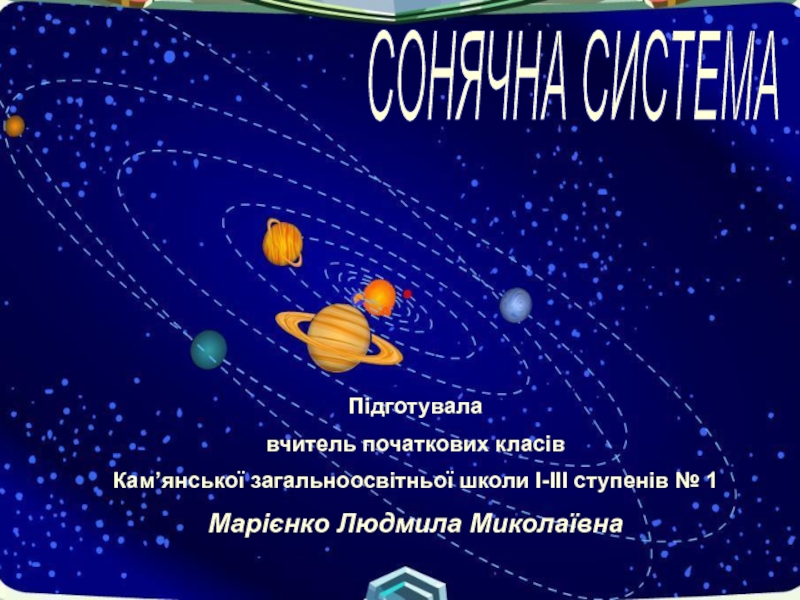Einstein originally only accounted for gravity, but then added a “cosmological constant” to balance gravity so that the Universe would be “static”. However, he later called this a mistake.
Yet, it turns out that he was correct to do so (but for the wrong reasons), since there is strong evidence today that the Universe is dominated by what we call dark energy. Not only does this balance gravity, but it apparently dominates it.
- Главная
- Разное
- Дизайн
- Бизнес и предпринимательство
- Аналитика
- Образование
- Развлечения
- Красота и здоровье
- Финансы
- Государство
- Путешествия
- Спорт
- Недвижимость
- Армия
- Графика
- Культурология
- Еда и кулинария
- Лингвистика
- Английский язык
- Астрономия
- Алгебра
- Биология
- География
- Детские презентации
- Информатика
- История
- Литература
- Маркетинг
- Математика
- Медицина
- Менеджмент
- Музыка
- МХК
- Немецкий язык
- ОБЖ
- Обществознание
- Окружающий мир
- Педагогика
- Русский язык
- Технология
- Физика
- Философия
- Химия
- Шаблоны, картинки для презентаций
- Экология
- Экономика
- Юриспруденция
The fate of the universe презентация
Содержание
- 1. The fate of the universe
- 2. The Fate of the Universe Depends on
- 3. The Fate of the Universe Depends on
- 4. The Fate of the Universe Depends on
- 5. Comparison to Earth’s Gravity
- 6. The Fate of the Universe Depends on
- 7. The Fate of the Universe Depends on
- 8. Possible explanation for the acceleration: vacuum pressure
- 9. Type I supernovae can be used to
- 10. However, when we look at the data,
- 11. The Critical Density The amount of mass
- 12. Density and the Fate of the Universe
- 13. If the density is low, the universe
- 14. The answer to this question lies in
- 15. However, the best estimates for the amount
- 16. Dark Energy and The Cosmological Constant Curiously,
- 17. I have drawn these curves starting from
- 18. If space is homogenous, there are three
- 19. These three possibilities are illustrated here. The
- 20. Summary of the Possible Geometries
- 21. Refining the Big Bang Model II: The
- 22. Inflation can also solve the flatness problem.
- 23. Cosmologists realized that galaxies could not have
- 24. Galaxies could then form around the dark-matter clumps, resulting in the Universe we see.
- 25. A simulation of structure formation in the Universe
- 26. Clumping of matter in the early Universe
- 27. This is a much higher-precision map of
- 28. Cosmology: Our Best Guess Ho = 71
Слайд 1The Fate of the Universe
The fate of the Universe depends on
Слайд 2The Fate of the Universe
Depends on how much mass and energy
Ignoring energy and assuming mass exerts no gravitational pull, the Universe would expand forever at the same rate that it is today (and was in the past).
Слайд 3The Fate of the Universe
Depends on how much mass and energy
Still ignoring energy but now allowing mass to exert gravitational pull, the Universe would slow down in its expansion (and not get as big).
Gravity acts like friction.
Слайд 4The Fate of the Universe
Depends on how much mass and energy
If there is enough mass the Universe will collapse back upon itself.
Слайд 6The Fate of the Universe
Depends on how much mass and energy
But Dark Energy has a repulsive force that can cause the expansion of the Universe to speed up again.
Слайд 7The Fate of the Universe
Depends on how much mass and energy
More matter (or less Dark Energy) would could the re-expansion to happen later.
Слайд 8Possible explanation for the acceleration: vacuum pressure (cosmological constant), more generically
In reality, the different curves should meet today rather than at the Big Bang. This has important implications for the age of the Universe.
Age of the Universe
Слайд 9Type I supernovae can be used to measure the behavior of
In a decelerating Universe, we expect to see more distant galaxies receeding relatively faster than nearby galaxies.
An Accelerating Universe?
Слайд 10However, when we look at the data, we see that it
That is, the Universe is dominated by dark energy.
Where we expected the data to be
Where it really is.
Слайд 11The Critical Density
The amount of mass needed to just barely make
Слайд 12Density and the Fate of the Universe
If Ω > 1, the
If Ω < 1, the Universe will expand forever.
If Ω = 1, the Universe just barely manages to expand forever.
Слайд 13If the density is low, the universe will expand forever.
If
Density
Слайд 14The answer to this question lies in the actual density of
Measurements of luminous matter suggest that the actual density is only a few percent of the critical density.
But – we know there must be large amounts of dark matter.
Fate of the Cosmos
Слайд 15However, the best estimates for the amount of dark matter needed
We can test this by measuring the distances and redshifts of objects.
Слайд 16Dark Energy and The Cosmological Constant
Curiously, Einstein had introduced this idea
He later called it the biggest blunder of his career.
Turns out he was right.
Слайд 17I have drawn these curves starting from the Big Bang, but
Age of the Universe
Accelerating Universe
Слайд 18If space is homogenous, there are three possibilities for its overall
Closed – this is the geometry that leads to ultimate collapse
Flat – this corresponds to the critical density
Open – expands forever
Слайд 19These three possibilities are illustrated here. The closed geometry is like
The Geometry of Space
Слайд 21Refining the Big Bang Model II: The Flatness Problem
We don’t yet
However, theory says that unless is Ω exactly 1 after the Big Bang, it should be either much smaller or much larger today.
It is unlikely that Ω would have been exactly 1 after the Big Bang.
So, how come the Universe looks so flat today?
Слайд 22Inflation can also solve the flatness problem.
A heavily curved region of
Слайд 23Cosmologists realized that galaxies could not have formed just from instabilities
The hot radiation from the Big Bang would have kept normal matter from clumping.
But, Dark Matter, being unaffected by radiation, could have started clumping long before normal matter.
Where Did the Galaxies Come From?
Слайд 26Clumping of matter in the early Universe would lead to tiny
These ripples have now been observed
Слайд 27This is a much higher-precision map of the cosmic background radiation.
It
Слайд 28Cosmology: Our Best Guess
Ho = 71 km/s/Mpc, so that the Universe
Λ=0.72, which means that q is not Ω/2 and qo can be < 0.
qo < 0, so the Universe is actually accelerating in its expansion.
Ω=1, so the Universe is “flat”.
